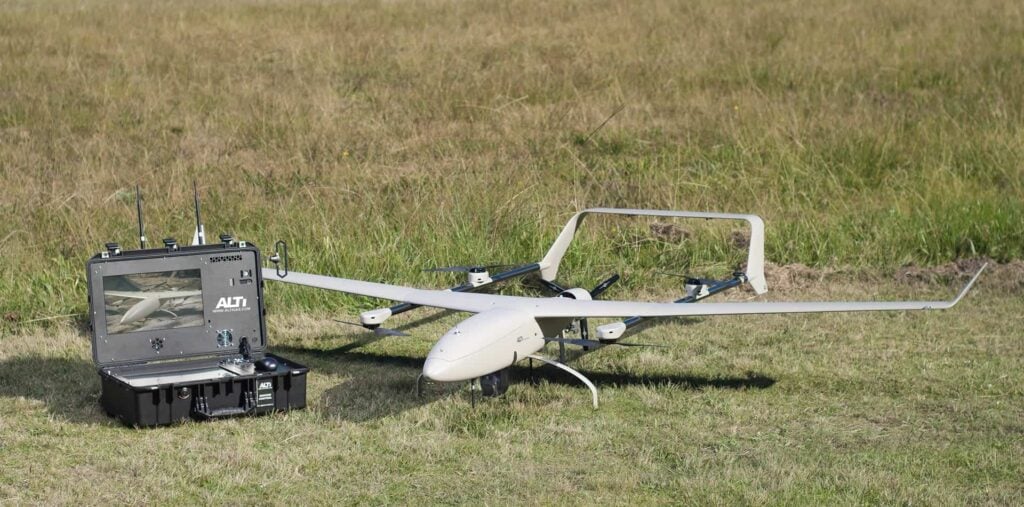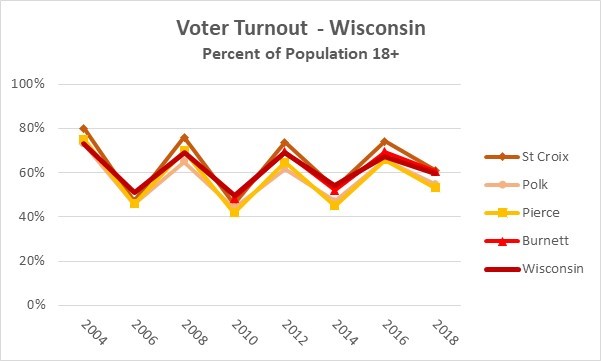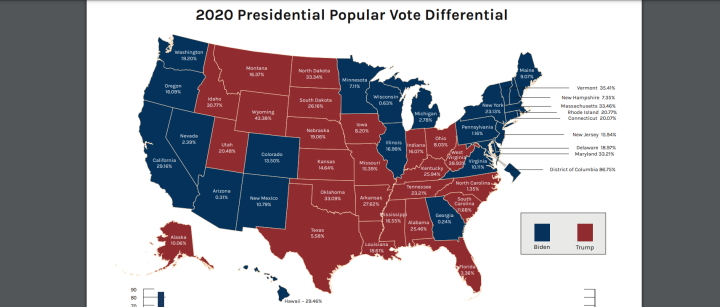U.S. Army's Drone Expansion: An Exclusive Look At Future Operations

Table of Contents
The Expanding Drone Fleet: Types and Capabilities
The U.S. Army's drone fleet is incredibly diverse, encompassing a range of unmanned aerial vehicles designed for specific missions. This expansion reflects a commitment to leveraging this technology across a broad spectrum of military operations.
Unmanned Aerial Vehicles (UAVs) in Current Use:
The Army currently employs several key UAV platforms, each with its own unique strengths:
- RQ-7 Shadow: A versatile, tactical UAV providing reconnaissance and surveillance capabilities at the brigade level. Its compact design allows for rapid deployment in diverse environments.
- MQ-1C Gray Eagle: A larger, more advanced UAV offering extended range and payload capacity. It's capable of carrying Hellfire missiles, making it a significant force multiplier in combat operations.
- Smaller Tactical Drones: Numerous smaller, commercially-available drones are increasingly integrated into Army operations, providing real-time situational awareness at the platoon and company levels. These offer improved reconnaissance in urban environments and challenging terrains.
These drones provide essential capabilities including:
- Reconnaissance: Providing real-time imagery and intelligence gathering in dangerous or inaccessible areas.
- Surveillance: Monitoring enemy movements and activities over extended periods.
- Attack: Precisely targeting enemy combatants and assets (in the case of armed drones).
- Communication Relay: Extending communication range in areas with limited connectivity.
Successful deployments of these UAVs have been numerous, contributing significantly to mission success in various theaters of operation. The Gray Eagle, for example, has proven its worth in providing crucial intelligence during counterinsurgency operations.
Next-Generation Drone Technologies:
The future of the U.S. Army's drone program involves significant technological advancements:
- AI-powered Autonomous Drones: Research is ongoing into drones capable of autonomous flight, target identification, and engagement, reducing reliance on human operators in high-risk situations. This includes sophisticated algorithms for obstacle avoidance and mission planning.
- Swarm Technology: The development of drone swarms promises enhanced situational awareness and the ability to overwhelm enemy defenses. This technology allows for coordinated actions from multiple drones, working collaboratively to achieve complex objectives.
- Improved Sensor Capabilities: Future drones will likely incorporate advanced sensors, providing higher-resolution imagery, improved target identification, and enhanced intelligence gathering capabilities, even under adverse weather conditions.
These advancements will allow for:
- Enhanced Situational Awareness: Near real-time intelligence across the battlefield.
- Precision Targeting: Minimizing civilian casualties and collateral damage.
- Logistical Support: Transporting supplies and equipment to remote locations.
Transforming Army Operations: Impact on Tactics and Strategy
The U.S. Army's drone expansion is profoundly impacting military tactics and strategies. The widespread adoption of UAVs is reshaping the way warfare is conducted.
Enhanced Situational Awareness:
Drones provide a significant advantage by delivering real-time intelligence directly to commanders. This improved situational awareness has several key consequences:
- Faster Decision-Making: Commanders receive up-to-the-minute information, leading to quicker and more informed decisions.
- Improved Response Times: Drones can rapidly deploy to assess situations and relay vital intelligence, leading to faster reaction times to emerging threats.
- More Effective Operations: Better intelligence translates to more successful missions, with reduced risks and greater efficiency.
Changes in Troop Deployment and Maneuvers:
Drone technology is changing how troops are deployed and how military maneuvers are conducted:
- Reduced Risk to Troops: Drones can undertake dangerous missions, minimizing the risk to human soldiers.
- Improved Mission Success: Enhanced intelligence and rapid response capabilities provided by drones directly increase the chances of mission success.
- More Agile and Flexible Strategies: The ability to deploy drones quickly and easily allows for more flexible and adaptable military strategies.
Challenges and Considerations: Ethical and Logistical Implications
Despite the advantages, the U.S. Army's drone expansion presents significant ethical and logistical challenges.
Ethical Concerns of Autonomous Weapons Systems:
The increasing autonomy of drones raises critical ethical considerations:
- Unintended Harm: The potential for algorithmic bias and unintended harm to civilians is a significant concern.
- Accountability: Determining accountability in cases of civilian casualties caused by autonomous drones is a complex legal and ethical challenge.
- International Law: The development and use of autonomous weapons systems must adhere to international humanitarian law and relevant regulations.
Logistical and Maintenance Requirements:
Supporting a large and diverse drone fleet necessitates robust logistical support:
- Maintenance and Repair: Regular maintenance and timely repairs are crucial for operational effectiveness.
- Integration into Military Infrastructure: Seamless integration of drone operations into existing military infrastructure requires significant planning and investment.
- Advanced Logistics and Supply Chain Management: Effective supply chain management is vital for ensuring the availability of spare parts and other essential resources.
Conclusion
The U.S. Army's drone expansion is rapidly transforming modern warfare. This article has highlighted the expanding fleet of UAVs, their enhanced capabilities, and the significant impact they have on military operations, from improving situational awareness to altering troop deployment strategies. While the benefits are substantial, ethical considerations surrounding autonomous weapons and the logistical challenges of maintaining a large fleet remain crucial aspects requiring ongoing attention. The U.S. Army's commitment to drone technology will continue to shape the future of military operations, demanding careful consideration of both the advancements and the implications of this evolving technology. Stay informed about this critical development by following [link to relevant resources/news outlets] for further updates on the future of military technology and the U.S. Army's drone program. Understanding the U.S. Army's drone expansion is crucial to comprehending the future of national security.

Featured Posts
-
 Florida And Wisconsin Election Results Analyzing Voter Turnout And Its Implications
May 03, 2025
Florida And Wisconsin Election Results Analyzing Voter Turnout And Its Implications
May 03, 2025 -
 Sabrina Carpenter Fortnite Release Date And Time Confirmed
May 03, 2025
Sabrina Carpenter Fortnite Release Date And Time Confirmed
May 03, 2025 -
 Siete Nuevos Vehiculos Mejoran La Operatividad Del Sistema Penitenciario
May 03, 2025
Siete Nuevos Vehiculos Mejoran La Operatividad Del Sistema Penitenciario
May 03, 2025 -
 The Influence Of Nigel Farage On Reform Uks Political Rise
May 03, 2025
The Influence Of Nigel Farage On Reform Uks Political Rise
May 03, 2025 -
 Significant Changes To Energy Policy Guido Fawkes Take
May 03, 2025
Significant Changes To Energy Policy Guido Fawkes Take
May 03, 2025
Latest Posts
-
 Public Trust In South Carolina Elections A 93 Approval Rating
May 03, 2025
Public Trust In South Carolina Elections A 93 Approval Rating
May 03, 2025 -
 Voter Turnout In Florida And Wisconsin Implications For The Future Of Politics
May 03, 2025
Voter Turnout In Florida And Wisconsin Implications For The Future Of Politics
May 03, 2025 -
 Maines First Post Election Audit Pilot Program A Comprehensive Overview
May 03, 2025
Maines First Post Election Audit Pilot Program A Comprehensive Overview
May 03, 2025 -
 Sc Election Integrity 93 Of Survey Respondents Express Trust
May 03, 2025
Sc Election Integrity 93 Of Survey Respondents Express Trust
May 03, 2025 -
 The 2024 Election And Beyond Lessons From Florida And Wisconsin Turnout
May 03, 2025
The 2024 Election And Beyond Lessons From Florida And Wisconsin Turnout
May 03, 2025
